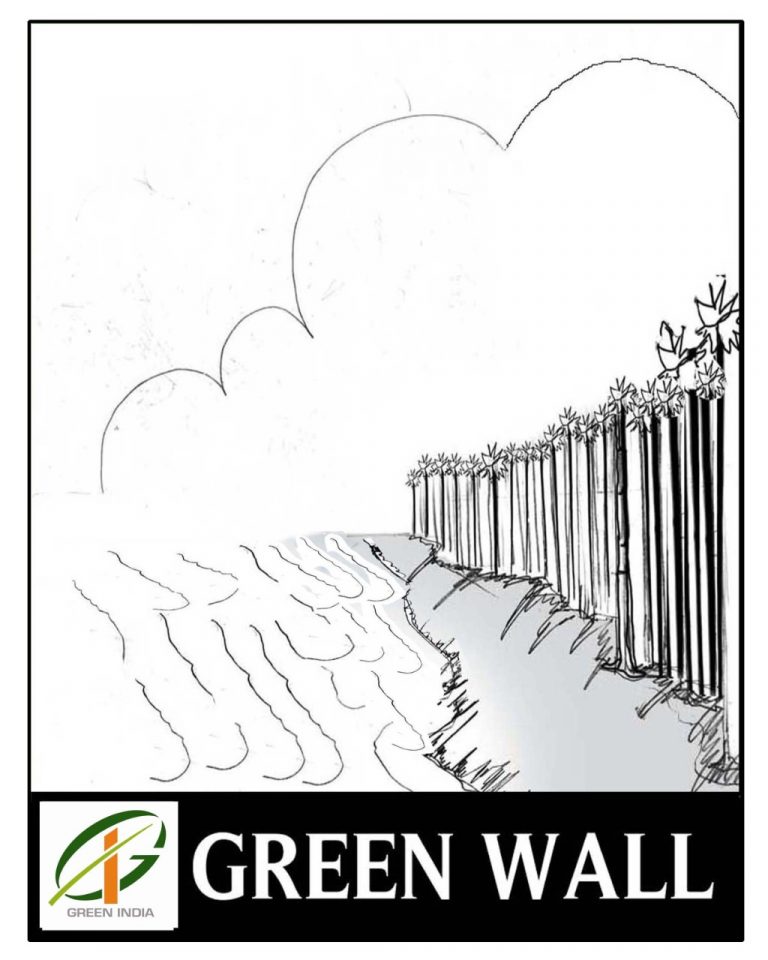Green Wall
Coastal Resources are of much help to mankind. Ecosystems of coastal resources have specific impacts on human life. This “Green Wall” Project deals with issues related to Palmyra covers and other forms of the plantation.
The “Green Wall” Project of Neshna Trust will establish systematic management of the plantation ecosystem to secure this valuable resource.
This project will be mainly implemented by Green India and with support from other NGOs like the Neshna Trust and Adithyas Green Foundation.

The “Green Wall” project will play a role as an active agent for the prevention of the Palmyra covers, Palmyra conservation, and restoration. The increase in the Palmyra area will help the coastal community by way of easy access to fuel wood and small timber requirement through sustainable harvesting. Since there will be a community-based approach, the community will have a feeling of owning the Project, and the Concept will be a sustainable one, in the long run.
Project Locations
- Phase I: 1,73,250 Plantation along 15 Km stretch of Krishnapatanam to Mypadu Coastal Line
- Phase II: 2,55,250 Plantation along 30 Km stretch of Krishnapatanam to Mypadu Coastal Line
- Phase III: 19,25,000 Plantation along 270 Km stretch of Krishnapatanam to Guntur Coastal Line
Environmental Impacts
- Regulated reclamation or alteration of habitats within the coastal line for residential and nonresidential purposes.
- Conservation of habitat niche with reference to certain species enhances biodiversity.
- Enhance groundwater recharge, and reduce littering and pollution.
- Promotes ecological succession and stabilization of the coastal line.
- Conservation of habitats/ecosystems enhances biodiversity
- The ecosystems/habitats provide facilities for roosting, spawning, and breeding ground for many
- species both aerial and aquatic species
- Checks salinity ingression and control disasters such as erosion, sea surges, and cyclones
- (Mangroves, Seagrasses, beeches, Sand dunes, etc.
- Enhances availability of resources such as fisheries, fodder, etc (mangroves, coral, sea grasses, mud banks, mudflats, etc.)
- Mudflats support ecological succession toward halophytic vegetation
- Social impacts
- People have been alerted to the chances of occurrence of natural hazards and will be more vigilant.
- The aesthetic value of the area is being maintained.
- Chances for enhanced livelihood improvement activities from coastal habitats and ecosystems.
- Increased opportunities for local economic development through nondestructive ways such as the conduct of tourism (Mangroves, Corals, beeches, Sand dunes, etc.
- Provide increased security from natural disasters (mangroves, corals, sea grasses, beeches, Sand dunes, etc.
- Conservation habitats check salinity ingression will enhance drinking water availability (mangroves, beaches, sand dunes, salt marshes, etc)
Project Outcomes
- Marginal and agricultural laborers, especially womenfolk, will be benefited directly from increased employment generation through plantation and regeneration activities in the coastal belt.
- Increase in mangrove cover and species diversity will bring about other associated benefits on a wider scale, such as increased fishery and other faunal resources, control of soil erosion and salinity intrusion, development of a natural barrier against storms, cyclones, tsunamis, and hurricanes, etc.
- By and large, the entire ecosystem will improve which leads to a healthy environment for the people. Enriching marine biodiversity by restoring selected coral species and mangrove species in the coastal line of eastern India.
- In addition benefits for climate change adaptation, local livelihoods, tourism, and cultures such as protection from storms and prevention of shoreline erosion, regulation of coastal water quality, and habitat for numerous fish species, and other commercial and endangered species.
